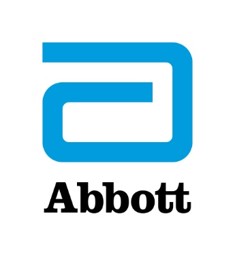Already a member? Click here to login.

Australian Diabetes Educators Association
Already a member? Click here to login.

Already a member? Click here to login.

Submit your case study about the care, education, and self-management of diabetes involving the use of flash glucose monitoring and LibreView and the ambulatory glucose profile (AGP) report for your chance to win a share of nearly $5000 in scholarship prizes.
You’ll also go into the running to receive full registrations to the Australasian Diabetes Congress 2024 and your case study could be featured in the Abbott FreeStyle Case Study booklet, a prominent publication that will be printed and showcased at the congress.
In a recently published article, discover what the People’s Choice Award winner of the 2023 Abbott case studies competition has to say about the competition’s benefits for diabetes care.
| Submit your case study now |
| Make an enquiry |
| Revisit our webinar on the 2024 Abbott Case Study Competition |
The following questions are to be addressed in each case study submitted:
1. How have the patient’s outcomes (clinical or non-clinical) improved with this technology?
2. How has the technology been used to make a difference to a patient’s quality of life?
3. How has the technology changed practice for an individual health professional or the diabetes care team?
4. How has it helped to prevent an adverse event?
5. Describe any challenges patients have found with this technology. What has been done as a consequence to address these challenges?
Please submit your entry following the guidelines and using this TEMPLATE.
Submitted case studies should include principles of person-centred care and adhere to the Diabetes Australia language position statement and the Reconciliation Australia language guide while discussing the use of flash glucose monitoring and LibreView that incorporates the AGP Report.
Selected by reviewing panel.
The Judge’s Choice Award will be selected by delegates at the ADC.
Judge’s Choice Award
Early Career Award
Read the top 10 case studies in 2023 here: Abbott Case Study Booklet 2023.
Congratulations to Cindy Shea and Catharine McNamara, who won the Abbott Freestyle Living with Diabetes Case Study People’s Choice Award for their case study: Managing hypoglycaemia unawareness in older adults with type 1 diabetes.
Our latest webinar featured expert judges and previous winners of the competition. The webinar presents all facets of the competition, including guidance about the judging criteria and other valuable tips to kickstart your entry and showcase your expertise in using flash glucose monitoring technology. Revisit the webinar recording on LMS.
Shona Vigus is the People’s Choice Award winner for best case study in the Freestyle living with Diabetes — learning from people living with Diabetes competition held in Brisbane in 2022.
In this webinar, she shares her approach to optimise care and improve the lives of those living with diabetes.
This podcast is with Katherine Snars, who was the runner-up for the Freestyle Living with Diabetes: Learning from case studies competition.
Applicants must obtain written consent from people living with diabetes discussed in the submitted case studies, giving permission that they are happy for the selected case studies to be published via print and/or online by ADEA.
The competition is managed and facilitated by ADEA based on consultation with a review panel of experienced endocrinologists and CDEs.
Abbott financially supports this program.


Submit your case study about the care, education, and self-management of diabetes involving the use of flash glucose monitoring and LibreView and the ambulatory glucose profile (AGP) report for your chance to win a share of nearly $5000 in scholarship prizes.
You’ll also go into the running to receive full registrations to the Australasian Diabetes Congress 2024 and your case study could be featured in the Abbott FreeStyle Case Study booklet, a prominent publication that will be printed and showcased at the congress.
In a recently published article, discover what the People’s Choice Award winner of the 2023 Abbott case studies competition has to say about the competition’s benefits for diabetes care.
| Submit your case study now |
| Make an enquiry |
| Revisit our webinar on the 2024 Abbott Case Study Competition |
The following questions are to be addressed in each case study submitted:
1. How have the patient’s outcomes (clinical or non-clinical) improved with this technology?
2. How has the technology been used to make a difference to a patient’s quality of life?
3. How has the technology changed practice for an individual health professional or the diabetes care team?
4. How has it helped to prevent an adverse event?
5. Describe any challenges patients have found with this technology. What has been done as a consequence to address these challenges?
Please submit your entry following the guidelines and using this TEMPLATE.
Submitted case studies should include principles of person-centred care and adhere to the Diabetes Australia language position statement and the Reconciliation Australia language guide while discussing the use of flash glucose monitoring and LibreView that incorporates the AGP Report.
Selected by reviewing panel.
The Judge’s Choice Award will be selected by delegates at the ADC.
Judge’s Choice Award
Early Career Award
Read the top 10 case studies in 2023 here: Abbott Case Study Booklet 2023.
Congratulations to Cindy Shea and Catharine McNamara, who won the Abbott Freestyle Living with Diabetes Case Study People’s Choice Award for their case study: Managing hypoglycaemia unawareness in older adults with type 1 diabetes.
Our latest webinar featured expert judges and previous winners of the competition. The webinar presents all facets of the competition, including guidance about the judging criteria and other valuable tips to kickstart your entry and showcase your expertise in using flash glucose monitoring technology. Revisit the webinar recording on LMS.
Shona Vigus is the People’s Choice Award winner for best case study in the Freestyle living with Diabetes — learning from people living with Diabetes competition held in Brisbane in 2022.
In this webinar, she shares her approach to optimise care and improve the lives of those living with diabetes.
This podcast is with Katherine Snars, who was the runner-up for the Freestyle Living with Diabetes: Learning from case studies competition.
Applicants must obtain written consent from people living with diabetes discussed in the submitted case studies, giving permission that they are happy for the selected case studies to be published via print and/or online by ADEA.
The competition is managed and facilitated by ADEA based on consultation with a review panel of experienced endocrinologists and CDEs.
Abbott financially supports this program.
